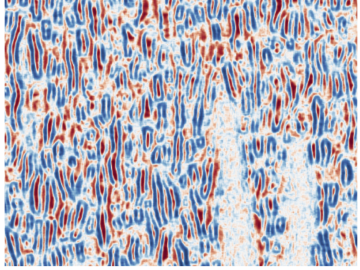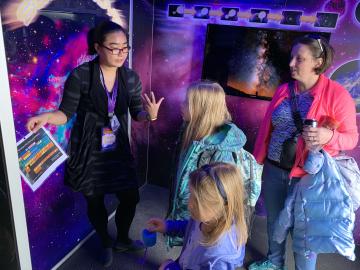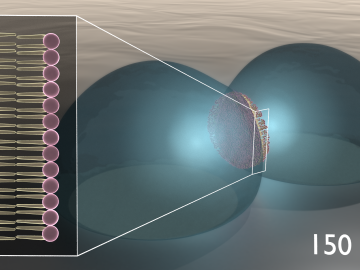Filter News
Area of Research
- Advanced Manufacturing (3)
- Biological Systems (2)
- Biology and Environment (11)
- Clean Energy (62)
- Climate and Environmental Systems (2)
- Computer Science (2)
- Data (1)
- Fossil Energy (1)
- Fusion Energy (2)
- Materials (47)
- National Security (3)
- Neutron Science (29)
- Nuclear Science and Technology (7)
- Quantum information Science (1)
- Supercomputing (35)
- Transportation Systems (1)
News Type
Date
News Topics
- 3-D Printing/Advanced Manufacturing (10)
- Advanced Reactors (2)
- Artificial Intelligence (7)
- Big Data (4)
- Bioenergy (11)
- Biology (1)
- Biomedical (4)
- Biotechnology (1)
- Clean Water (3)
- Composites (1)
- Computer Science (24)
- Cybersecurity (5)
- Energy Storage (5)
- Environment (16)
- Exascale Computing (3)
- Frontier (2)
- Fusion (3)
- Grid (2)
- Isotopes (1)
- Machine Learning (2)
- Materials Science (10)
- Mercury (2)
- Microscopy (2)
- Nanotechnology (3)
- Neutron Science (12)
- Nuclear Energy (6)
- Physics (5)
- Quantum Science (7)
- Security (2)
- Space Exploration (1)
- Summit (7)
- Sustainable Energy (6)
- Transportation (6)
Media Contacts

Beyond solids, liquids, gases, plasma, and other examples only accessible under extreme conditions, scientists are constantly searching for other states of matter.

Scientists at the U.S. Department of Energy’s Brookhaven National Laboratory have new experimental evidence and a predictive theory that solves a long-standing materials science mystery: why certain crystalline materials shrink when heated.

Oak Ridge National Laboratory researchers will lead two new projects and support seven more to enhance the reliability and resilience of the nation’s power grid as part of the U.S. Department of Energy’s 2019 Grid Modernization Lab Call.

Elizabeth Herndon believes in going the distance whether she is preparing to compete in the 2020 Olympic marathon trials or examining how metals move through the environment as a geochemist at the Department of Energy’s Oak Ridge National Laboratory.

Researchers at the Department of Energy’s Oak Ridge National Laboratory have received five 2019 R&D 100 Awards, increasing the lab’s total to 221 since the award’s inception in 1963.

In the vast frozen whiteness of the central Arctic, the Polarstern, a German research vessel, has settled into the ice for a yearlong float.

A joint research team from Google Inc., NASA Ames Research Center, and the Department of Energy’s Oak Ridge National Laboratory has demonstrated that a quantum computer can outperform a classical computer

Scouts from around East Tennessee learned about supercomputing, electricity, isotopes, physics, and much more at Oak Ridge National Laboratory’s final Traveling Science Fair event of 2019

Researchers at the Department of Energy’s Oak Ridge National Laboratory, the University of Tennessee and Texas A&M University demonstrated bio-inspired devices that accelerate routes to neuromorphic, or brain-like, computing.

The U.S. Department of Energy announced funding for 12 projects with private industry to enable collaboration with DOE national laboratories on overcoming challenges in fusion energy development.

